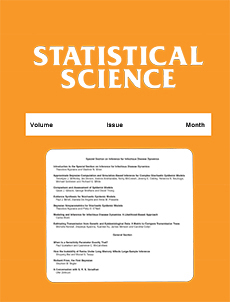Abstract
Testing of precise (point or small interval) hypotheses is reviewed, with special emphasis placed on exploring the dramatic conflict between conditional measures (Bayes factors and posterior probabilities) and the classical P-value (or observed significance level). This conflict is highlighted by finding lower bounds on the conditional measures over wide classes of priors, in normal and binomial situations, lower bounds, which are much larger than the P-value; this leads to the recommendation of several alternatives to P-values. Results are also given concerning the validity of approximating an interval null by a point null. The overall discussion features critical examination of issues such as the probability of objective testing and the possibility of testing from confidence sets.
Citation
James O. Berger. Mohan Delampady. "Testing Precise Hypotheses." Statist. Sci. 2 (3) 317 - 335, August, 1987. https://doi.org/10.1214/ss/1177013238
Information





